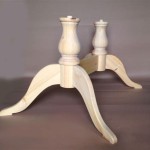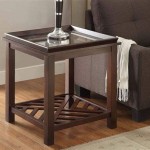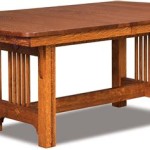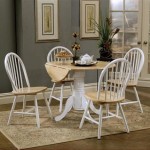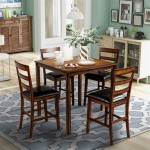Butcher Block Table Top Plans: Essential Considerations
Introduction: Butcher block tabletops are sturdy and versatile surfaces that add character and functionality to any kitchen. They are particularly popular for their durability and ability to withstand the rigors of food preparation. When planning a butcher block tabletop, several essential aspects must be considered to ensure a successful outcome.
Material Selection: Butcher blocks are typically made from solid wood, with popular choices including maple, oak, and cherry. Each wood species offers unique characteristics in terms of grain pattern, hardness, and resistance to moisture. Maple is a medium-hardwood with a tight grain pattern, making it highly durable. Oak is a hardwood with a more pronounced grain pattern and excellent resistance to wear and tear. Cherry is a softer hardwood with a beautiful reddish-brown hue.
Construction Methods: Butcher block countertops can be constructed using various methods. The most common technique is edge-grain construction, where wood planks are glued together on their edges, resulting in a distinctive end-grain appearance. Edge-grain countertops are highly durable and less prone to warping. Another option is face-grain construction, where wood planks are glued together on their flat sides. Face-grain countertops have a more uniform appearance and are easier to clean.
Size and Thickness: The size and thickness of a butcher block tabletop should be determined based on the available space and the intended use. Standard countertop depth ranges from 24 to 36 inches. The thickness of a butcher block tabletop can vary from 1.5 inches to 3 inches. Thicker countertops are more durable but also more expensive. It is essential to consider the weight of the countertop when choosing its thickness.
Finishing: The finishing applied to a butcher block tabletop will significantly impact its appearance and durability. Several options are available, including oil, wax, and polyurethane. Oil finishes penetrate the wood and provide a natural, matte finish. Wax finishes offer a bit more protection and can be buffed to a shine. Polyurethane finishes create a hard, protective layer on the wood's surface, making it highly water-resistant.
Maintenance: Maintaining a butcher block tabletop is crucial to its longevity and appearance. Regular cleaning with soap and water is essential to remove food residue and dirt. Periodic application of oil or wax will help to preserve the wood and prevent drying. It is important to avoid using harsh chemicals or abrasives on butcher block countertops.

How To Build A Butcher Block Table Out Of 2x4

How To Build Your Own Butcher Block Addicted 2 Diy

How To Build Your Own Butcher Block Addicted 2 Diy

How To Build Your Own Butcher Block Addicted 2 Diy

Edge Grain Butcher Block A Diy Tutorial 5 Steps With S Instructables

Build Your Own Butcher Block Kitchen Island

How To Build And Install Butcher Block Countertops Home Bar Pt 4 Crafted Work

How To Build Your Own Butcher Block Addicted 2 Diy

How To Make A Butcher Block Table Simplified Building

How To Build A Butcher Block Table Out Of 2x4

